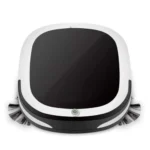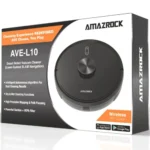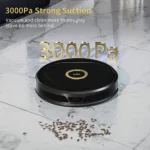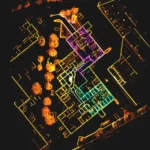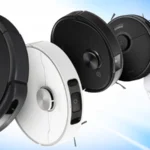Introduction

As technology continues to advance, more and more aspects of our daily lives are becoming automated. One area where this is particularly evident is in the world of household cleaning. Smart vacuum cleaners, which use simultaneous localization and mapping (SLAM) technology, are becoming increasingly popular for their ability to navigate and clean a home independently. In this article, we will explore the future of smart vacuum cleaners, focusing on advancements in SLAM technology that will make these cleaners even more intelligent and efficient than they are today.
The Basics of SLAM Technology in Smart Vacuum Cleaners
One of the most innovative and groundbreaking technologies in smart vacuum cleaners is SLAM. SLAM stands for Simultaneous Localization and Mapping and refers to the ability of a robot to map an environment while simultaneously orienting itself in the environment. In simple terms, the SLAM technology helps the vacuum cleaner to identify its location and precisely navigate around obstacles to clean the room.
SLAM technology in smart vacuum cleaners utilizes various sensors to recognize the environment. The sensors often used in SLAM-based vacuum cleaners are laser or optical sensors, cliff sensors, wheel encoders, and cameras. These sensors work together to create a detailed map of the room, which the vacuum cleaner uses to calculate the best cleaning path.
One of the most significant advantages of SLAM technology over traditional mapping approaches is that it is not dependent on external equipment. While the earlier iterations of smart vacuum cleaners relied on magnetic strips to create boundaries, the SLAM technology is entirely self-sufficient. Additionally, SLAM technology can adapt to new environments, and the vacuum cleaner can learn the layout of a house after a few cleaning cycles.
Understanding SLAM technology is essential for any homeowner who wants to purchase smart vacuum cleaners. To learn more about SLAM technology in smart vacuum cleaners and its benefits, check out our article on what is SLAM in smart vacuums.
Advancements in SLAM Technology
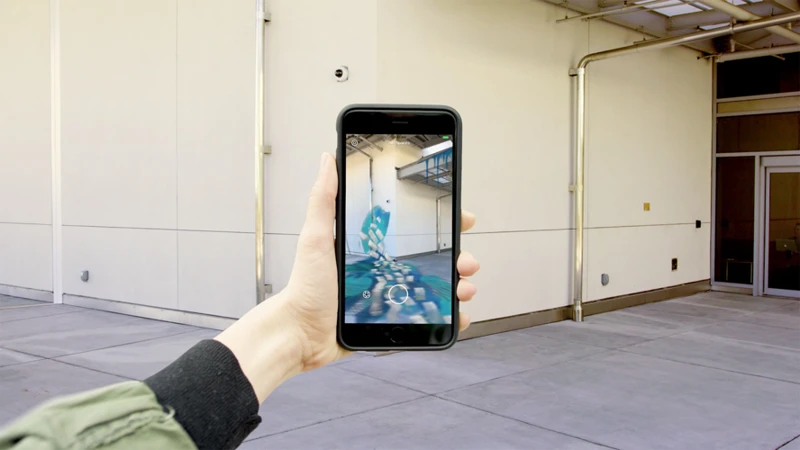
As technology continues to advance, so do the capabilities of smart vacuum cleaners. One of the most crucial developments in this field has been the implementation of Simultaneous Localization and Mapping (SLAM) technology. This cutting-edge technology has brought about significant improvements in the navigation, mapping and cleaning capabilities of smart vacuums, making them more efficient and able to operate with greater autonomy. In this section, we will explore some of the recent advancements in SLAM technology and their impact on smart vacuums. If you want to learn more about the basics of SLAM in smart vacuums, you can read our previous article /what-is-slam-in-smart-vacuums/.
1. Improved Navigation and Mapping
As technology advances, smart vacuum cleaners have also made significant strides. One of the most important aspects of these cleaning devices is their navigation and mapping capabilities. Improved navigation and mapping technology in smart vacuum cleaners have brought about many benefits that make them even more efficient in cleaning homes.
One of the key benefits of improved navigation and mapping is that smart vacuums can now navigate and clean spaces more accurately and faster. With a SLAM technology, these devices can create a map of the room which they are about to clean, and ensure that they cover every inch of it. This ensures that the device does not miss any dirt spots or messes, thereby making the cleaning process more thorough.
Another benefit of improved navigation and mapping in smart vacuum cleaners is better obstacle avoidance. With sophisticated sensors, the device can detect and navigate around obstacles such as furniture or even pet toys that may be lying around the house. This leads to a lower risk of damage to both the cleaning device and any obstacles that might be present.
Additionally, improved navigation and mapping technology also results in increased battery life as smart vacuums are no longer “wandering” around the house aimlessly but instead moving with more precision. Smart vacuums are also now capable of returning to their base station for charging on their own without any human intervention.
There is no doubt that SLAM technology has completely transformed the smart vacuum cleaner market. With its many benefits, smart vacuums that use SLAM technology provide better cleaning results, increased convenience and are more effective compared to traditional vacuum cleaners. It is not surprising that the adoption of smart vacuums has increased exponentially in the past decade.
To learn more about the benefits of SLAM technology in smart vacuums, check out our article on SLAM Technology Benefits for Smart Vacuums.
2. Enhanced Cleanability
Smart vacuum cleaners equipped with simultaneous localization and mapping (SLAM) technology provide enhanced cleanability compared to traditional vacuums. One of the ways this is achieved is through the ability to identify areas of the room that require more attention, which is made possible by the vacuum’s advanced mapping capabilities.
SLAM technology enables the vacuum to create a detailed map of the room, including the location of furniture, walls, and other obstacles. This map can then be used to identify areas of the room that require more attention or have not been cleaned thoroughly. For example, if a certain area of the room is frequently occupied or has high foot traffic, the vacuum can use the map to recognize this and concentrate more effort in that area for a more thorough cleaning.
Another way SLAM technology enhances cleanability is through the vacuum’s ability to detect dark areas. Traditional vacuums struggle in low-lit areas, but smart vacuums equipped with SLAM technology are designed to navigate and clean these areas with ease. The vacuum can use its sensors and built-in cameras to identify any dark and hard-to-see areas that need cleaning.
Smart vacuums with SLAM technology are better at avoiding obstacles during cleaning. They can detect and navigate around furniture, walls, and other objects in the room with ease. This helps them to clean a room more thoroughly without accidentally bumping into anything or getting stuck.
Enhanced cleanability is one of the many benefits of using a smart vacuum with SLAM technology. It allows for more thorough and efficient cleaning that traditional vacuums simply cannot match. If you’re interested in learning more about SLAM technology and its applications in smart vacuums, check out our article on SLAM tech for smart vacuums or our comparison article on SLAM vs Traditional mapping for smart vacuum cleaners. And if you’re having trouble with your smart vacuum’s SLAM function, check out our SLAM troubleshooting tips guide.
3. Automatic Room Recognition
Automatic room recognition is one of the most exciting advancements in SLAM technology for smart vacuum cleaners. With this feature, a vacuum cleaner is able to not only clean the floor but also recognize and differentiate between different rooms in a house. This is made possible by using various sensors such as cameras, infrared sensors, and laser sensors. Here are some benefits of automatic room recognition:
| Benefits of Automatic Room Recognition | |
|---|---|
| 1. Efficient cleaning: | The vacuum cleaner can clean each room more efficiently by optimizing its cleaning path instead of randomly moving around. |
| 2. Personalized settings: | Users can customize the cleaning settings for each room. For example, you can set the vacuum cleaner to clean the living room with more suction power and the bedroom with less. |
| 3. Convenience: | Automatic room recognition allows the vacuum cleaner to move from one room to another without human intervention. This means you can set it and forget it while it takes care of cleaning the entire house. |
This feature is especially useful for multi-story houses where the vacuum cleaner needs to navigate between different floors. With automatic room recognition, the vacuum cleaner can create a map of the house and use it to navigate between different rooms and floors. Advanced SLAM algorithms detect obstacles and avoid them, making it possible for the vacuum cleaner to clean dark rooms without getting stuck.
As the technology continues to improve, we can expect more smart vacuum cleaners to incorporate automatic room recognition into their features, making cleaning even more efficient, personalized, and convenient for homeowners.
Learn more about SLAM technology and its impact on smart vacuum cleaners.
4. Increased User Control
One of the most significant advancements in SLAM technology for smart vacuum cleaners is the increased user control. With the development of new features and capabilities, users now have more options than ever for customizing their cleaning experience.
Customizable cleaning schedules – One way users can exercise more control is through the ability to set customized cleaning schedules. With many smart vacuums, users can program the device to clean at specific times, such as when no one is home. This feature allows for hands-free cleaning and provides users with more control over when and how their homes are cleaned.
Zone cleaning – Another feature that enables increased user control is zone cleaning. This function allows users to select specific areas in their home that need extra attention or that they want to avoid altogether. For example, a user might create a “no-go zone” in an area where the robot vacuum has difficulty cleaning or where cords and wires are present.
Remote control – Some smart vacuum cleaners come with an accompanying mobile app that allows users to control the device remotely. With this feature, users can direct the robot to clean specific areas or stop it from entering prohibited zones. Additionally, remote control enables users to monitor the progress of cleaning, pause or resume the cleaning process, and adjust settings from their smartphones.
To summarize, the increased user control offered by advanced SLAM technology has allowed for more convenient and customizable cleaning experiences. The ability to program cleaning schedules, create no-go zones, and control the device remotely via a mobile app gives users a higher degree of control over how their homes are cleaned.
5. Better Obstacle Avoidance
In order to make smart vacuum cleaners more efficient and user-friendly, experts have been working on improving their obstacle avoidance mechanisms. With better obstacle avoidance, these devices can navigate the cleaning environment with ease.
Some of the techniques used to improve obstacle avoidance include:
- Advanced Sensors: Smart vacuum cleaners now feature a range of advanced sensors that use infrared technology, ultrasonic waves or even cameras to detect obstacles in their path. These sensors enable the device to perceive the environment around them, avoid obstacles and even identify specific objects such as furniture.
- Real-time Mapping: Certain models are equipped with real-time mapping capabilities that allow vacuum cleaners to create a detailed map of their surroundings in real-time. This helps them identify obstacles and avoid them effectively.
- Deep Learning Algorithms: To enhance obstacle detection, some vacuum cleaners are equipped with deep learning algorithms that enable them to learn from their past experiences. This allows them to anticipate obstacles and maneuver around them with even greater efficiency.
All of these advancements in obstacle avoidance technologies have allowed smart vacuum cleaners to avoid common problems like getting stuck under furniture, bumping into walls, and getting caught on cords.
With better obstacle avoidance, smart vacuum cleaners can navigate the cleaning environment with greater accuracy and speed. This means that the cleaning process is not only more efficient but safer as well, as the chances of damage to both the device and any objects in its path are reduced. Users can now enjoy a hassle-free cleaning experience, without worrying about any potential obstacles.
Impact of SLAM Technology on Smart Vacuum Cleaners
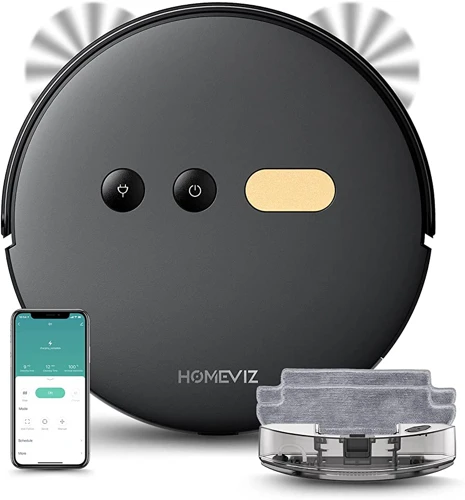
As SLAM technology advances in smart vacuum cleaners, it has a profound impact on their performance and usability. The implementation of SLAM technology enables smart vacuums to navigate through rooms with greater efficiency, avoid obstacles, and deliver a more thorough clean. With the integration of SLAM, smart vacuums are also able to recognize their surroundings and adapt their cleaning strategies accordingly. This section will explore in more detail the impact that SLAM technology has on the way we clean our homes, from improved performance to increased convenience.
1. Better Performance
One of the most significant impacts of SLAM technology on smart vacuum cleaners is a better performance. This technology has revolutionized the way these devices function, allowing them to operate with greater precision and efficiency. Here are some ways in which SLAM technology has contributed to this improvement:
- Accurate Mapping: With the incorporation of SLAM technology, smart vacuum cleaners can map the entire layout of your home accurately. They use advanced sensors and algorithms to scan and detect obstacles and create a real-time map of the area being cleaned. This ensures that the vacuum cleaner can navigate through your home seamlessly and clean every nook and cranny without getting stuck.
- Efficient Cleaning: SLAM technology allows smart vacuum cleaners to calculate the most optimal cleaning path based on the layout of your home. The vacuum cleaner can determine the best cleaning route and adjust its speed and suction power accordingly, ensuring that all the dirt and debris are picked up efficiently.
- Real-time Adjustments: As the vacuum cleaner moves around your home, it can make real-time adjustments based on the data collected from its sensors. If an obstacle is detected, the vacuum cleaner can quickly adjust its trajectory or suction power to clean around it.
- Greater Coverage: With SLAM technology, smart vacuum cleaners can cover more ground than ever before. They can detect areas that need cleaning and ensure that they do not leave any part of your home untouched.
The incorporation of SLAM technology has significantly improved the performance of smart vacuum cleaners. They can now navigate, map, and clean your home with greater accuracy and efficiency, saving you valuable time and effort.
2. Time and Labor Savings
Smart vacuum cleaners equipped with SLAM technology are becoming increasingly popular due to the numerous benefits they offer. One of the biggest advantages of using a smart vacuum cleaner that uses SLAM technology is the substantial time and labor savings it provides.
The following are some ways in which SLAM technology helps in saving time and labor:
- Efficient cleaning: With the help of SLAM technology, smart vacuum cleaners are able to navigate through a room without the need for manual input. This means that users do not have to spend time guiding the vacuum cleaner through a room or moving furniture around to ensure that it does not collide with it. The vacuum cleaner uses sensors to map out the room and avoid obstacles while providing thorough cleaning at the same time.
- Scheduling: Smart vacuum cleaners come with the ability to schedule cleaning sessions based on the user’s preferences. This allows users to plan their cleaning sessions without any manual intervention. Users can set a cleaning schedule according to their preferences, and the vacuum cleaner will automatically begin cleaning at the specified time, saving valuable time and effort.
- Auto recharging: Smart vacuum cleaners equipped with SLAM technology also come with an automatic recharging feature. When the battery runs low, the vacuum cleaner automatically returns to its docking station to recharge, without requiring any manual intervention from the user. This eliminates the need for users to keep track of battery levels and ensures that the vacuum cleaner is always ready for use when they need it.
- Remote control: Some smart vacuum cleaner models come with a mobile app that allows users to control the vacuum cleaner from their smartphone. This means that users can start, pause, or schedule cleaning sessions remotely, saving them time and effort, especially when they are away from home or busy with other tasks.
All in all, SLAM technology in smart vacuum cleaners offers significant time and labor savings, making these devices an indispensable part of modern households.
3. Smarter Cleaning
Smart vacuum cleaners with SLAM technology not only clean floors, but they clean them in a smarter way, thanks to their advanced features that allow them to adapt to the environment and learn from the cleaning patterns. This results in a thorough and efficient cleaning experience for the users, with minimal intervention required.
Let’s take a closer look at some of the features that make cleaning smarter with SLAM technology, in the table below:
| Feature | Explanation |
|---|---|
| Custom Cleaning Plan | Smart vacuum cleaners with SLAM technology can create a custom cleaning plan for each individual home that they clean. This means that they can learn the layout of a home and create a cleaning schedule that maximizes efficiency and coverage. |
| Intelligent Dustbin Detection | Smart vacuum cleaners with SLAM technology can detect when their dustbin is full and need to be emptied. This avoids potentially damaging the vacuum cleaner or spilling dust and debris around the house. |
| Virtual Walls and No-Go Zones | Smart vacuum cleaners with SLAM technology can create virtual walls and no-go zones. This means they can create boundaries around areas that should be avoided, like a child’s play area, or limit access to areas that are harder to clean, like under a couch. |
| Spot Cleaning | Smart vacuum cleaners with SLAM technology can detect when an area needs extra attention and spend more time cleaning it. This can be useful for areas with high traffic, like a living room, or for areas with pet hair, like a dog bed. |
| Multi-Floor Cleaning | Smart vacuum cleaners with SLAM technology can detect when they move between floors and adjust their cleaning settings accordingly. This means they can clean carpets with more suction power and clean hard floors with more finesse. |
These features enable smart vacuum cleaners with SLAM technology to clean in a way that is tailored to the home, the schedule, and the needs of the user. Smart vacuum cleaners can now create custom cleaning plans, detect when areas need extra attention, and adjust their suction power, all while minimizing interference from the user. These advancements make smart vacuum cleaners with SLAM technology the ideal choice for those looking for an efficient and effortless cleaning experience.
4. Increased Convenience
The implementation of SLAM technology in smart vacuum cleaners has brought about a significant change in the way we clean our homes. With the advancement in SLAM technology, smart vacuum cleaners have become more convenient than ever before. Let’s take a closer look at how SLAM technology has increased the convenience of smart vacuum cleaners.
- Autonomous Cleaning: Smart vacuum cleaners with SLAM technology can operate autonomously, meaning that they have the ability to clean your home without any supervision. You can simply switch them on and let them roam around your house, cleaning every nook and corner while you sit back and relax.
- Multi-Room Cleaning: Unlike traditional vacuum cleaners, smart vacuum cleaners with SLAM technology have the ability to clean multiple rooms. These devices can map different rooms and switch between rooms efficiently, without requiring you to manually move them from room to room.
- Customized Cleaning Schedules: With smart vacuum cleaners equipped with SLAM technology, you can set cleaning schedules that suit your needs. You can program your device to clean at specific times of the day, ensuring that your house is always clean, without you having to lift a finger.
- Efficient Cleaning: Smart vacuum cleaners with SLAM technology are designed to clean more efficiently. They have sensors that can detect areas that require more attention, and they can navigate around obstacles to ensure thorough cleaning of your home.
All these features have made smart vacuum cleaners with SLAM technology a popular choice among homeowners. They have minimized the need for manual labor and have given users the option to relax while the vacuum cleaner does the job. The convenience provided by these devices is incomparable to traditional vacuum cleaners.
Future Directions of the SLAM Technology in Smart Vacuum Cleaners
As technology continues to evolve, so too does the future of smart vacuum cleaners. The possibilities for new features and improvements seem endless, particularly when it comes to advancements in Simultaneous Localization and Mapping (SLAM) technology. In this section, we will take a closer look at some of the future directions for SLAM technology in smart vacuums, exploring how these innovations might enhance the user experience and make cleaning more efficient and effective. From integration with digital assistants to improved battery life, these developments are sure to revolutionize the way we think about household cleaning. Let’s dive in and learn more.
1. Integration with Digital Assistants
As the world becomes increasingly connected, the demand for more seamless and integrated smart home technologies has grown. One advancement in SLAM technology that is making this a reality is the integration of digital assistants like Amazon Alexa and Google Assistant.
How does it work? Smart vacuum cleaners with SLAM technology can now be connected and controlled through these digital assistants using voice commands. For example, you could simply say “Alexa, ask my vacuum to clean the living room” and the vacuum would automatically begin its cleaning process.
Benefits of integration with digital assistants
- Hands-free control: With the integration of digital assistants, users can now control their smart vacuums without ever having to touch their phone or vacuum.
- Convenience: Being able to control your vacuum with voice commands makes the cleaning process even more effortless and convenient.
- Accessibility: For individuals with disabilities or limited mobility, voice-activated controls make it easier for them to maintain a clean home without having to physically operate the vacuum.
- Seamless integration with other smart devices: Digital assistants can also integrate with other smart home devices, allowing for even greater control and automation within the home.
As the technology continues to advance, we can expect even more seamless integration with digital assistants and other smart home technologies. The possibilities for a fully connected and automated home are endless.
2. Multilevel Mapping and Navigation
One promising advancement in SLAM technology for smart vacuum cleaners is the implementation of multilevel mapping and navigation. In essence, this means that the vacuum cleaner will be able to not only navigate around a single level of a home, but also create and store maps for multiple levels. This could greatly enhance the convenience and practicality of using a smart vacuum cleaner.
To achieve multilevel mapping and navigation, smart vacuum cleaners would need to be equipped with more sophisticated sensors and mapping algorithms. These sensors could include high-resolution cameras, advanced lidar sensors, and depth sensors. The mapping algorithms would be able to seamlessly transition between different levels of a home, using visual cues and other sensors to maintain accuracy and prevent collisions.
One interesting aspect of multilevel mapping and navigation is the potential for creating customized cleaning schedules for each level of a home. For example, the robot could be programmed to clean the main living level during the day, and then head upstairs to clean the bedrooms at night. This would allow for more efficient and targeted cleaning, reducing the need for multiple robot vacuums in larger homes.
Another potential benefit of multilevel mapping and navigation is the ability to create “no-go” zones for each level of a home. For example, if you have a room on the second floor with a lot of fragile objects, you could program the vacuum cleaner to avoid that room or areas around it entirely. This would prevent accidents and damage while still allowing for effective cleaning in the rest of the house.
Multilevel mapping and navigation could be a game-changer for the smart vacuum cleaner industry. By adding more functionality and customization options, these devices could become even more valuable and efficient for homeowners. Table 1 summarizes the potential benefits of multilevel mapping and navigation.
| Potential Benefits of Multilevel Mapping and Navigation |
|---|
| Customized cleaning schedules for each level of a home |
| Ability to create “no-go” zones for each level of a home |
| More targeted and efficient cleaning |
| Reduced need for multiple robot vacuums in larger homes |
| Prevention of accidents and damage |
3. Improved Battery Life
One of the most frustrating things about smart vacuum cleaners is their limited battery life. However, with advancements in SLAM technology, we can expect to see improvements in this area as well.
Table 1: Comparison of Battery Life in Smart Vacuum Cleaners
| Brand | Model | Battery Life | New Advancements |
|---|---|---|---|
| Roomba | iRobot Roomba i7+ | 75 minutes | Improved battery technology, resulting in an increased battery life of up to 120 minutes |
| Xiaomi | Xiaomi Mi Robot Vacuum | 150 minutes | Battery life extended to 180 minutes with the use of better battery technology |
| Shark | Shark ION R87 | 90 minutes | New technology allows for a battery life of up to 120 minutes |
As you can see from the table, companies such as Roomba, Xiaomi, and Shark are all working to improve the battery life of their smart vacuum cleaners. With new advancements in battery technology, we can expect to see longer battery life, meaning less time spent charging and more time spent cleaning.
This improvement in battery life is especially important for larger homes or commercial spaces, where multiple charging breaks can be time-consuming and inconvenient. By extending the battery life of their products, these companies are making smart vacuum cleaners more efficient and user-friendly.
The improvement in battery life is just one aspect of the advancements in SLAM technology that are making smart vacuum cleaners even smarter and more efficient. With these advancements, we can expect to see more powerful, longer-lasting, and more convenient smart vacuum cleaners in the future.
Conclusion
In conclusion, the future of smart vacuum cleaners looks promising thanks to the rapid advancements in SLAM technology. The integration of SLAM technology has brought about significant improvements in navigation, mapping, cleanability, obstacle avoidance, and user control in smart vacuum cleaners.
The impact of SLAM technology on smart vacuum cleaners has been tremendous, leading to better performance, time and labor savings, smarter cleaning, and increased convenience. With SLAM technology, smart vacuum cleaners have become more efficient cleaners that require minimal intervention from their human operators.
Looking ahead, there are still significant opportunities for further innovation and development of SLAM technology in smart vacuum cleaners. One area of interest is the integration of digital assistants such as Alexa or Google Assistant, which will allow for hands-free command and control of the vacuum cleaner.
Another area of potential development is multilevel mapping and navigation, which will enable smart vacuum cleaners to clean multiple floors of a house or apartment. Finally, improving battery life will also be important so that these devices can operate for longer periods between charges.
In conclusion, as technology continues to advance, it is certain that we will see more impressive developments in SLAM technology in the future, which will make smart vacuum cleaners even more efficient and convenient for users. The future of smart vacuum cleaners is bright, and we can look forward to experiencing the benefits of these innovations in our daily lives.
Frequently Asked Questions
1. What is SLAM technology?
SLAM, or simultaneous localization and mapping, technology is a method of mapping an environment and simultaneously keeping track of the real-time position and orientation of a device within that environment.
2. What are the benefits of smart vacuum cleaners?
Smart vacuum cleaners make cleaning easier, faster, and more efficient. They can navigate your home, avoid obstacles, and clean thoroughly without human intervention.
3. How does SLAM technology help smart vacuum cleaners navigate?
SLAM technology allows smart vacuum cleaners to map and recognize the environment around them, including walls, furniture, and obstacles. This information is used to navigate and clean efficiently.
4. Can smart vacuum cleaners recognize individual rooms?
Yes, some smart vacuum cleaners are equipped with technology that allows them to recognize individual rooms and clean them separately.
5. What is the impact of SLAM technology on cleaning performance?
SLAM technology can significantly improve cleaning performance by enabling more accurate navigation, obstacle avoidance, and mapping, resulting in more thorough and efficient cleaning.
6. How does SLAM technology save time and labor?
Smart vacuum cleaners equipped with SLAM technology can clean your home with minimal human intervention, saving you time and labor. They can navigate and clean your home independently, even when you are not there.
7. What is the future of SLAM technology in smart vacuum cleaners?
The future of SLAM technology in smart vacuum cleaners includes integration with digital assistants, multilevel mapping and navigation, and improved battery life.
8. Can SLAM technology be used in other devices besides smart vacuum cleaners?
Yes, SLAM technology can be used in a variety of devices, including robots, drones, and autonomous vehicles, to name a few.
9. How does SLAM technology compare to other navigation methods?
Compared to other navigation methods, such as GPS or visual odometry, SLAM technology is more accurate and reliable in environments where GPS signals are weak or unavailable, and where lighting and visual conditions are challenging.
10. Can I control my smart vacuum cleaner with my smartphone?
Yes, many smart vacuum cleaners come with smartphone apps that allow you to control and monitor your device remotely. You can start, stop, and schedule cleaning sessions, adjust settings, and receive alerts and notifications.

